A Letter of Hope from Paris
Awash in the Crosscurrents of Climate Change and Terrorism in the City of Light
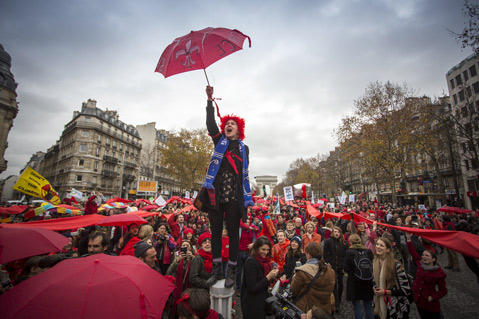
It is sometime past 1 a.m. outside of the Bataclan nightclub in Paris. The night is crisp and bustling with people, the promise of the coming winter delivered with each biting blow of wind that rattles down the age-old Boulevard Voltaire.
It’s one month to the day that terrorist gunmen stormed the fabled rock-and-roll venue, turning a well-attended Friday-night performance by Palm Desert’s Eagles of Death Metal into a bloodbath of worldwide proportions. Eighty-nine concertgoers were left dead that night; more than 200 were wounded.
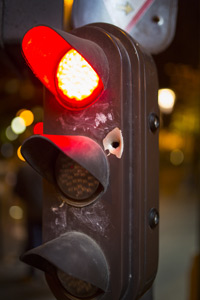
And now, outside the club, with a bullet-riddled tour bus still parked front and center along the curb, an impressive impromptu open-air temple to the deceased and the destroyed has taken shape. Waist-deep drifts of floral arrangements, candles, photographs, letters, signs, and assorted other mementos of loss and remembrance paint a complex and very much living mosaic of love — a most messy and anguished and inspiring love.
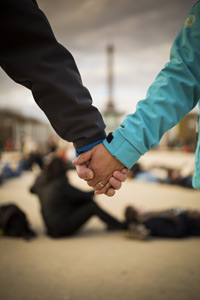
Overwhelmed, I make my way around the side of the building and down a glowing and narrow cobblestoned alley to the Bataclan’s side door. The scene is awash in that romantic and diffuse yellow-white glow that illuminates the City of Light each day when darkness arrives. It is a light as old as the city itself, or so it feels as I run my hands over the building’s thick stucco exterior, my fingers tracing deep and chunked-out bullet holes.
A lone candle and modest bouquet of roses sit by the door. A family of four huddles around it, teary-eyed and whispering things I can only imagine. Time transfigures and folds over itself as I stagger my way through a torrent of confused emotion. I find a wall and lean against it with the raw weight of the world, my own tears not far behind.
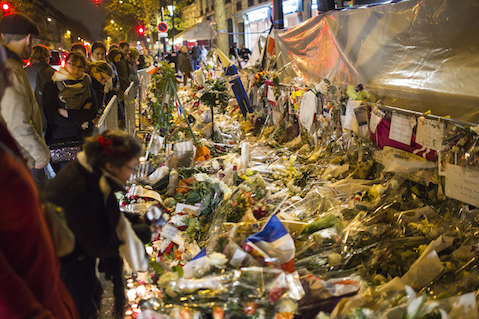
Just hours before, in the converted Le Bourget airport about a nine-mile drive to the north, the most significant and ambitious environmental treaty the world has ever known was ratified. With a simple swing of his gavel right around 7:30 p.m. Paris time, French Foreign Minister and COP21 President Laurent Fabius brought to a close the business end of the United Nations Climate Change Conference (a k a the 21st Conference of the Parties or COP21) — and, with it, the approval of the so-named Paris Agreement, a historic and binding international treaty between nearly 200 countries aimed squarely at the long-term reduction of greenhouse-gas emissions.
Indeed, the history books of tomorrow will look back on the 12th day of the 12th month of 2015 with special attention, for it was here, on this day and in this place, when the first bells of the fossil-fuel industry’s death knell were rung true and clear. In a never-before-seen turn of events, nearly every nation on the planet pledged to aggressively cut their carbon emissions with the singular goal of ushering in a fossil-fuel-free tomorrow sometime in the coming century. In and of itself, this promise marks a turning point of culture-shifting proportions for a global population so plainly addicted to oil and gas and coal. As UN Secretary General Ban Ki-moon told the assembled delegates on that fateful Saturday evening, “What was once unthinkable is now unstoppable.”
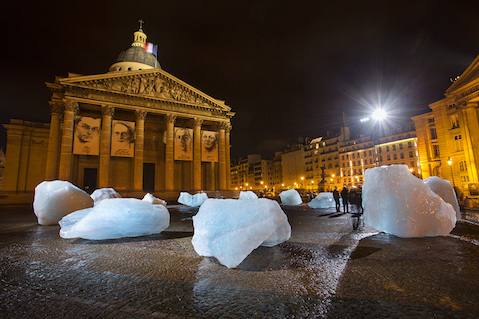
It was the potential for bearing witness to that very moment that motivated my travel to Paris late last month. Against the advice and furrowed brows of nearly everyone in my life, I, along with photographer and Big Sur native Kodiak Greenwood, boarded a plane just two days after Thanksgiving. As a freshly minted father and realistic citizen of the world, I would be lying if I didn’t admit to my own amount of consternation about making the trip just a few short weeks after the heartbreaking barbarism that rocked France’s capital on November 13. But journalism is what I do, and I’ve long since learned that being afraid never pays off.
More to the point, telling stories about the natural world and the myriad ways we interact with it — be they beautiful or disastrous or somewhere in between — is what’s motivated my writing for the past decade, so this two-week Earth-minded get-together was going to be an absolute apex moment in that regard. It was something I simply could not miss.
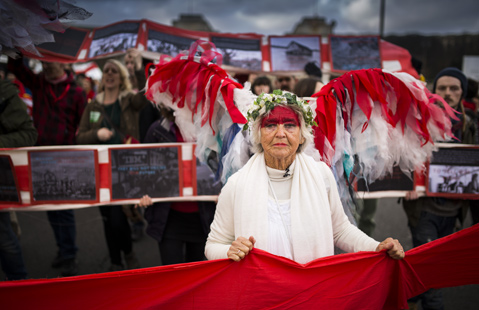
So with 2015 about to conclude as the warmest year on record here for Planet Earth, just a year after 2014 earned the same distinction, I found myself in Paris, chasing stories for The Santa Barbara Independent. What unfolded over that fortnight was beyond succinct or brief description.
The largest gathering ever of world leaders under one roof marked Day 1, with heads of state from more than 150 nations coming together in a pomp-and-circumstance-rich display of solidarity in taking real action against climate change. To that end, delegates and negotiators from just more than 190 countries along with official UN observers and lobbyists from thousands of eco-focused nongovernment organizations came together with scores of scientists, innumerable amounts of media folk, and hundreds upon hundreds of activists at Le Bourget each day for the rest of the conference’s duration.
Then there was the dizzying swirl of spin-off events and high-profile, celebrity-stacked pro-planet parties and, perhaps best of all, sharply pointed public art installations. The French government, as part of its state of emergency in the wake of the terrorist attacks, put a strict ban on public assembly during COP21. But the voice of the people is paramount in conferences such as this, and their demands and desires were not denied, thanks to efforts of artists big and small.
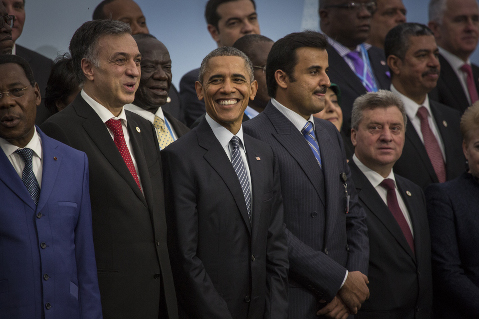
This collection of humanity and hope and hard work was heady enough by itself, but it was also colored around the edges with the heavy hand of fear and suffering still echoing from November’s assault on the Western world’s way of life. To be in France, a place steeped in the spirit of revolution, at a time when the man-made death spiral of our planet shared the stage with the wickedness of terrorism and the realities of endless war, was a most arresting and poignant sort of life poetry. It is a verse that will help inform everything that comes next in my life.
As longtime readers of The Independent may recall, I also covered COP15 from Copenhagen, a gathering of similar scale and import to Paris but one that ended in an absolute dysfunctional failure. The haves of the world simply refused to hear the needs of the world’s have-nots, and the talks quickly descended into a flaming shit show of mistrust, hollow promises, and virtually zero resolve. There was real fear that a similar fate would unfold in Paris. However, by the time the dust settled last week, it was clear the negotiators didn’t let that happen this time around.
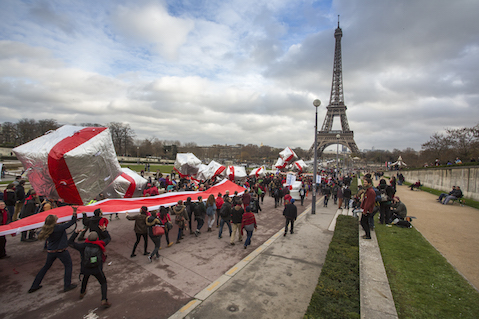
Of course, like all successful compromises, the deal that was ultimately brokered was a mixed bag of victories and losses that depend on your vantage point in life. But the Paris Agreement, by any informed measure, is far better than some hoped for and not nearly as bad as most feared.
Could it have done stronger in motivating the world to wean itself of fossil fuel sooner? Absolutely. But was such an outcome possible when you consider the massive chasm of differences between all the interests huddled around the negotiating table? Unfortunately not. This is how multilateral, international treaties get done.
There’s been no shortage of both celebration and trepidation since Fabius’s gavel knock heard round the world. But most agree that the Paris Agreement will only reverberate for generations to come if the nations that brokered it trend toward the ambitious end of the plan rather than hide out in the loopholes they created for themselves as part of the process. “We must enjoy this historic moment, but the hard work has only just begun,” explained the European Union’s chief negotiator and climate commissioner, Miguel Arias Cañete. “What has been promised must now be delivered.”
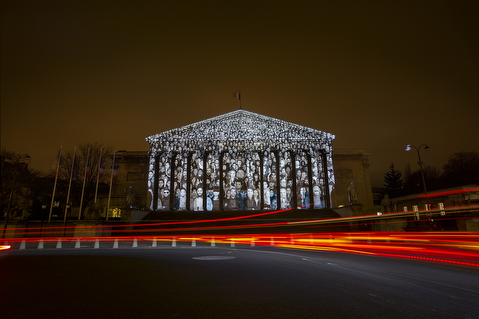
Some fear that such a delivery will not come, that even this historic agreement will ultimately have a legacy of failure. I could not disagree more — to me, Arias Cañete’s declaration is an open and honest invitation to hope, something that’s desperately needed in these modern times of arrogance, dangerous extremism, and shortsighted brinksmanship. It was in that alley alongside of the Bataclan that I was hit with the hammer of humanity. High on history and unable to sleep, we made our way to that place of such marked tragedy with no real purpose other than to check it out and add our sympathies to the chorus of worldwide caring. I did not expect the experience to bring my entire COP21 journey full circle, casting the long days of history making in a most illuminating light.
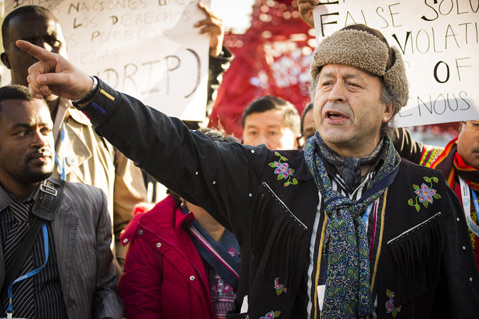
But it was there, among the flowers and the tears and the unbridled, high-voltage current of emotion, that I found the higher-altitude view I’d been searching for since landing in Paris. You see, the majority of government leaders who made the trip to Paris to horse-trade the future of our planet first stopped at the Bataclan, leaving behind stately floral arrangements embossed with golden signatures that flooded the memorial beyond its capacity.
I have no doubt that these individual pilgrimages, no matter how brief, reduced these men and (few) women to a place of pure humanism. It’s impossible to be in that space and not feel the deeply tethered ties that bind us all, no matter our economic station or particular national interests. It is a raw and softening thing to which all humans respond and which, I believe, became a catalyst for compromise between those who typically fail to see eye to eye.
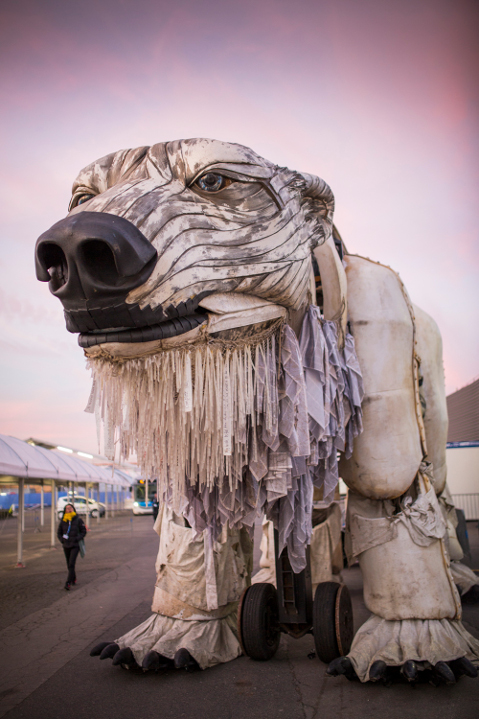
Maybe I am alone in saying this, but I suspect the Paris Agreement would have been much weaker had it not been for the wickedness that transpired throughout Paris on that now infamous Friday the 13th. The very people charged with finding common ground in the name of our collective greater good were reminded of their fragile and all-connecting humanity in the most primordial of manners just hours before the talks began.
After all, when faced with the seemingly insurmountable or the impossibly dark, hope is the only realistic first step toward a positive outcome. Without it, no journey to a better place is able to begin, let alone be achieved. Hope is what brought us all to Paris, hope is what allowed an agreement to be found, and hope is precisely what will carry us forward into the lifetime of work that awaits. Indeed, it is hope that is at the heart of our humanity.
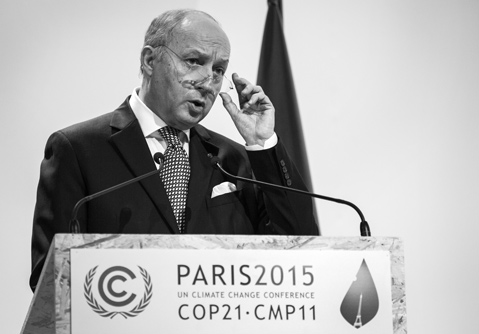
The Paris Agreement: Cliffs Notes Version
The two-pronged bit of legislation comprises a 12-page agreement, which outlines plans of action and commitments by nations starting in 2020, and a 20-page section of decision, which explores what nations need to do in the lead-up to the agreement taking full effect. What follows is a quick and dirty list of the historic treaty’s highlight and lowlights:
The Good
• There is a mandate of keeping global temperature rise, by the end of 2100, to “well below” 2 degrees Celsius with the added bonus of “pursuing efforts to limit the temperature increase to 1.5°C.”
• Specific language promises a carbon-neutral planet by the middle of this century.
• The establishment of a $100 billion annual Green Climate Fund will help developing countries adapt to climate chaos, mitigate damage done, and ramp up renewable technology.
• Individual plans are required that detail how countries will achieve carbon cuts and related promises.
• The individual national plans will be subject to review every five years starting in 2018 to make sure they are actually being delivered on.
The Bad
• The treaty is, by and large, not legally binding. There are no punitive damages for countries that fail to make good on their promises.
• The spectrum of individual national plans does not limit the world to the 2°C target — not even close, say scientists actively crunching the numbers.
• The subject of shipping- and aviation-related emissions is not addressed.
• There is no real language defining the specific terms of carbon capping, valuation, and related future trading activity between countries.
• There is a lack of specificity about how funding will be dispersed to countries as they work to phase out fossil fuels and/or adapt to a changing climate reality.



